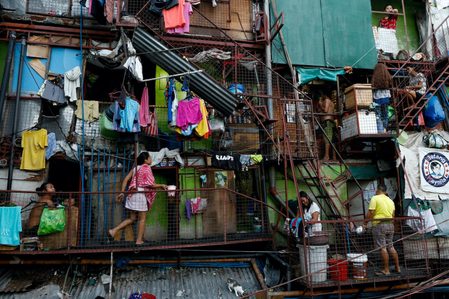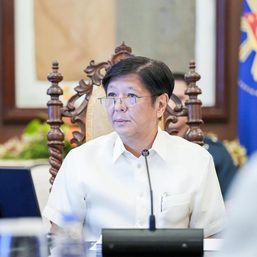SUMMARY
This is AI generated summarization, which may have errors. For context, always refer to the full article.
![[ANALYSIS] Inconvenient truth on Philippine income inequality](https://www.rappler.com/tachyon/2023/05/tl-inconvenient-truth.jpg)
We are republishing this from marengwinniemonsod.ph with permission from the author.
An “inconvenient truth” refers to somethings that is factual or accurate, but leaves the receiver uncomfortable, or bitter – maybe with a bad taste in the mouth – and with a definite feeling that something has to be done about the state of affairs.
Let me provide you, Reader, with some inconvenient truths about the Philippine economy and polity. Most of these are contained in different parts of the Philippine Development Plan (PDP) 2023-2028, usually in the “Assessment and Challenges” portion of each chapter. I’ve just regrouped them in a different way to provide a summary of what we are up against and a baseline of how far we have to go, vis-a-vis our ASEAN-5 neighbors (ASEAN-5 is used by the International Monetary Fund to refer to Malaysia, Indonesia, the Philippines, Thailand and Vietnam).
In part one of this series, I started with the FIRST INCONVENIENT TRUTH: That the Philippines has the lowest per capita GDP (lowest income per capita) among the ASEAN-5. We were slightly below Malaysia in 1960 and way ahead of the others (Vietnam wasn’t even within our horizon then), but Thailand overtook us in 1983, Indonesia in 1994, and Vietnam two years ago). And it’s not that we are neck-and-neck or just slightly behind, either. Thailand’s per capita income in international dollars, for example, is more than twice ours.
The SECOND INCONVENIENT TRUTH is that the Philippines has the most unequal distribution of income among the ASEAN-5, as measured by the Gini coefficient (where 0 is most equal, and 1 the most unequal): Philippines 0.4158, Malaysia 0.3937, Indonesia 0.3833, Vietnam 0.3558, and Thailand 0.3455. Again, it was not always thus.
In the early ‘80s up to the mid ‘90s, Malaysia and Thailand had much more unequal income distribution than the Philippines. But Thailand caught up with us, or we caught up with Thailand sometime around the middle of the ‘90s, and Malaysia caught up with us around 2013. Indonesia and Vietnam always had a more equal income distribution than the Philippines, although Indonesia’s income inequality has risen sharply, and Vietnam’s has risen too, but not by much.
Much has been made about the Philippine’s income inequality decreasing from 0.46 in 1997 to 0.41 in 2021. But this pales in comparison to Malaysia and Thailand’s performance:
Philippines: 0.46 → 0.41
Malaysia: 0.49 → 0.39
Indonesia: 0.48 → 0.34
What these all suggest is that the quantity of economic growth experienced by the rest of ASEAN-5 was not only much larger, but also the developmental quality of that growth was better – more equally distributed.
The THIRD INCONVENIENT TRUTH is related to and directly influenced by the first two: that the Philippines has the highest poverty headcount ratio (% of population) at $2.15 a day (2017 PPP) among the ASEAN-5 (2021).
Thailand: 0%
Malaysia: 0%,
Vietnam: 0.7%
Indonesia: 2.5%
Philippines: 3%
What a long way Indonesia has traveled since 2000, when its poverty headcount ratio was 43.6%, getting it down to 2.5% in 2021. Compare that to our 14.5% in 2000, to 3% in 2021.
By 2004, Indonesia had cut its poverty rate to 27%, while we sauntered along with 13.6%. Or, look at Vietnam’s performance. In 2004, its poverty headcount ratio was 20.1%, compared to Vietnam’s 20.1%, while ours was 13.6%. By 2008, the situation was reversed: Vietnam was 11.1% to our 11.3% (2009). Indonesia, which had double our poverty incidence in 2000, overtook us only last year, but it overtook us just the same.
It is noteworthy, Reader, that even if Vietnam took until 2020 to overtake us in per capita GDP, it had already reduced its poverty to a rate lower than ours by 2008. A caring government, Vietnam, working overtime, so to speak, to reduce their poverty level.
The Philippine government was obviously not so caring. Or maybe it did care, but was not competent enough. Or, maybe it cared, and was competent enough, but had too many roadblocks in its way – like leaders and dynasties that were focused on achieving their personal, mayhap selfish objectives rather than on the welfare of the country. What do you think? – Rappler.com
Solita “Winnie” Monsod was the first National Economic and Development Authority secretary appointed after the fall of the Marcos dictatorship in 1986. She is a professor emerita at the UP School of Economics where she taught starting 1983. She finished her degree in economics in UP and obtained her masters in economics at the University of Pennsylvania. She is a board director of Rappler Inc.
Add a comment
How does this make you feel?





![[WATCH] #TheLeaderIWant: Filipino voters sound off on community issues a year before 2025 elections](https://www.rappler.com/tachyon/2024/05/filipino-voters-sound-off-on-community-issues-1.jpg?resize=257%2C257&crop=276px%2C0px%2C720px%2C720px)
There are no comments yet. Add your comment to start the conversation.